|
Ref : 1048
An unlabelled German violin stamped 'Stainer' |

go to Home Page see more Violins |
This unlabelled violin's modeling, workmanship and the 'Stainer' stamp in the back at the neck button clearly identify it as part of the trade output at Markneukirchen, from around 1920. It's appearance is somewhat unusual, particularly in the shape and positioning of the Fs. Also, workmanship is perfunctory at best and as with most of these instruments, the arching is high, yet the materials are good and attractive and the tone is strong and robust and really pleasant. The varnish is an appealing reddish-brown amber over a yellow ground. This violin is responsive and nicely balanced and overall it is a good playing instrument that accommodates most demands made on it.Even though this violin has a modern setup and dates from around 1920, it distinctly has a Baroque neck with a neck stop of 126 mm rather than the modern 130 mm. The neck also has the characteristic thick and slanted neckroot associated with Baroque violin necks and the unusual laminated fingerboard in which one layer of ebony is glued on top of another. The fingerboard is of stained hardwood and not of ebony.
I doubt it that this violin's Baroque modeling was done as a later conversion, but think that it was intended to be a Baroque instrument from its inception, but through the years no-one realized that and that it simply began being set up and used as a modern instrument.
This violin would serve well as Baroque violin and could be converted very easily as fully fledged Baroque instrument. Tonally it's very responsive and such a conversion, I believe, could be really successful.
 |
 |
 |
||
 |
Dimensions : Length of back: 35.4 cm
Condition : The only noticeable repair in this violin is to a seam separation in the back's centre line, which is secure. There are absolutely no cracks in the instrument.
Provenance : Withheld
Price : On request
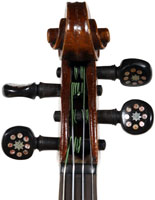 |
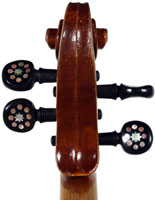 |
 |
 |
 |
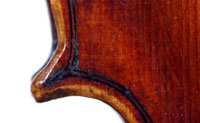 |
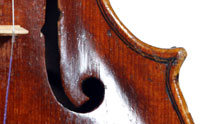 |
 |
 |
 |
 |
 |
|||||
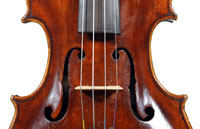 |
 |